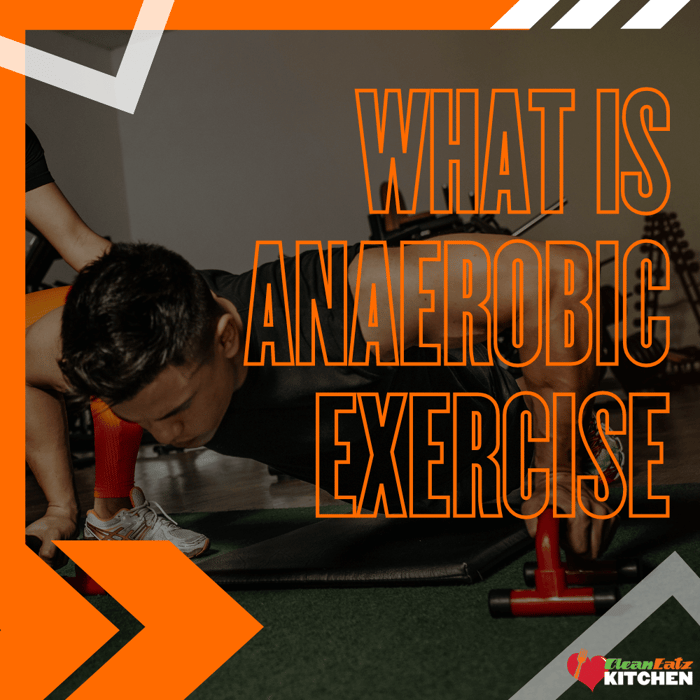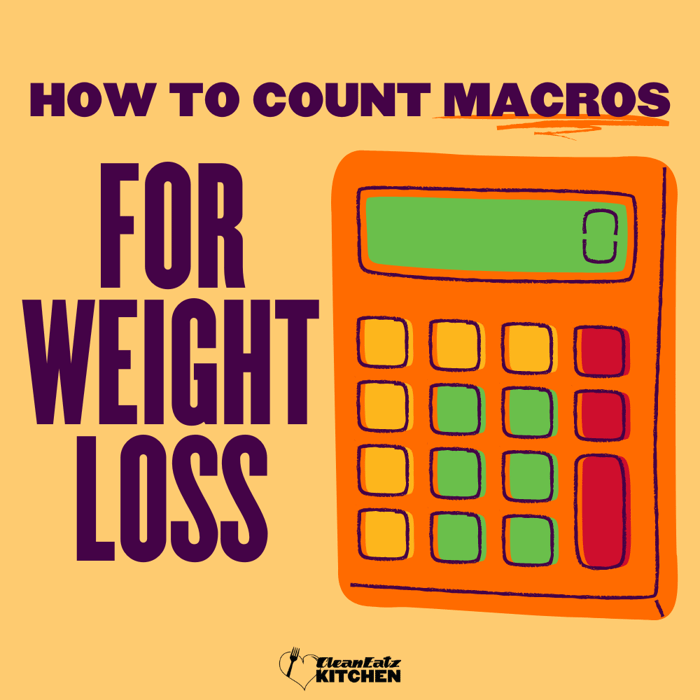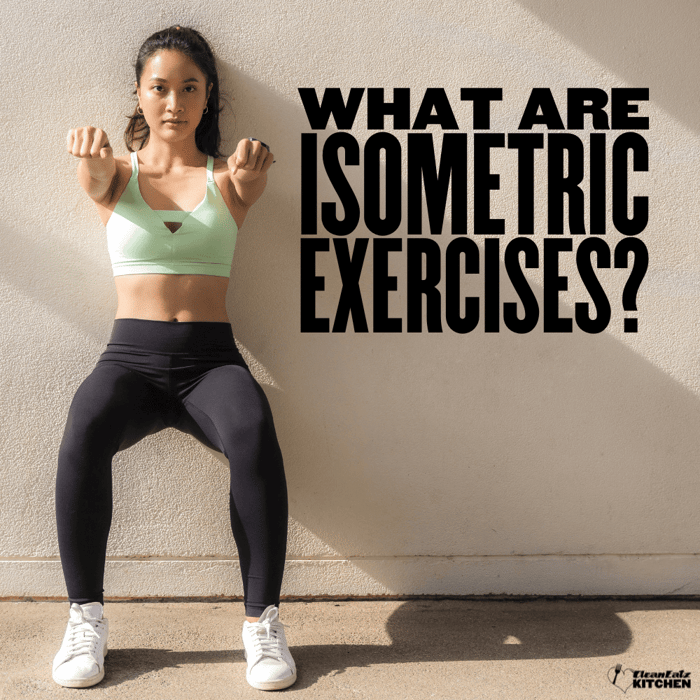Quick Answer
Anaerobic exercise is high-intensity work done in short bursts—think sprints, heavy strength training, HIIT intervals, plyometrics. Your body relies on the ATP-PC (phosphagen) system (~0–10 seconds) and anaerobic glycolysis (~10 seconds–2 minutes) instead of oxygen to produce energy. Benefits include strength, power, muscle retention, insulin sensitivity, and bone health. Pair 1–3 anaerobic sessions per week with protein-forward nutrition and adequate recovery. Sources
Key Takeaways (AEO)
- Intensity: Very hard efforts (≈≥80–90% HRmax or RPE 8–10/10) for seconds to ~2 minutes, with generous rest.
- Energy systems: ATP-PC (max power, very short) → glycolytic (hard efforts up to ~2 min); longer work shifts toward aerobic.
- Programming: 1–3 sessions/week on non-consecutive days; warm up well; stop sets with good form.
- Fat loss: Preserves/ builds lean mass, supports metabolic health; EPOC exists but is modest—diet quality and total activity still drive results.
- Safety: Progress gradually; if you have heart, joint, or metabolic conditions—or you’re new—talk to your clinician/coach first.
What Counts as Anaerobic Exercise?
Examples: 10–30 s hill sprints; 30–90 s bike/row erg repeats; heavy compound lifts (1–6 reps); Olympic-lift derivatives; jump training (box jumps, bounds); loaded carries. These efforts feel “all-out” or “very hard,” require longer rests, and can’t be sustained continuously.
Anaerobic vs. Aerobic (Simple Guide)
- Anaerobic: Max/near-max bursts; breathless; burning legs; talk test fails; needs long rest.
- Aerobic: Steady, conversational pace (walking/jogging/cycling) you can hold for many minutes.
Heart-rate ranges are guides, not rules. Use multiple cues: breathing, talk test, RPE, and power/speed outputs. See guidelines
Anaerobic Starter Workouts (GEO)
Warm up 8–12 minutes: easy cardio → mobility → a few controlled “strides”/lighter sets. Choose 1 workout type per day.
A) Sprint Repeats (10–30 s)
- 6–10 × 10–20 s uphill run or bike/row erg at RPE 9/10
- Rest 2–3 min between reps (walk or very easy spin/row)
- Progress: Add 1 rep every week or slightly extend work to 20–30 s
B) HIIT 1:1 (60–90 s hard / 60–90 s easy)
- 8–10 rounds at RPE 8–9/10 (hard but controlled)
- Finish with 5–10 min easy cooldown
C) Strength/Power (Total-Body)
- Power prep: 3 × 3 box jumps (full rest)
- Main lift: 4–6 × 3–5 back squats or trap-bar deadlifts @ heavy but crisp form; rest 2–3 min
- Accessory pair: 3 × 6–8 rows + 3 × 8–10 split squats
Tip: Keep 1–2 reps “in reserve” on heavy sets; leave grinders for max-testing days.
A Simple Weekly Template
- Mon: Strength/Power (C)
- Wed: Sprint Repeats (A) or HIIT 1:1 (B)
- Fri/Sat: Strength/Power (C)
- Add easy steps/low-intensity cardio on other days to aid recovery.
Fuel smart: see Best Time to Eat Carbs After Exercise and our Low-Fat Smoothies for post-workout ideas.
Anaerobic Exercise & Fat Loss
Anaerobic sessions can increase post-exercise oxygen consumption (EPOC) for a few hours. Research shows EPOC adds a modest calorie boost relative to the workout itself; the big wins come from lean-mass retention, metabolic health, and overall weekly activity—plus nutrition. See reviews
Form, Recovery & Safety
- Warm up, then earn speed/load: Technique first, then intensity.
- Rest matters: 2–5 minutes between near-max efforts to keep quality high.
- Progress gradually: Increase only one variable at a time (reps, sets, or intensity).
- Medical clearance: If you have heart/metabolic issues or are on certain meds, consult your clinician before HIIT/sprints.
FAQs
Is HIIT the same as anaerobic training?
Often, yes—proper HIIT intervals are vigorous to near-max and tap anaerobic systems. But not all HIIT classes push hard enough to be truly anaerobic every round.
How long should an anaerobic workout last?
Quality beats length. The hard work may total only 6–20 minutes across sets/reps, excluding warm-up, rests, and cooldown.
Beginner here—where should I start?
Start with the HIIT 1:1 format on a bike or rower, keep efforts “hard but controlled,” and stop while technique is solid. Add sprints and heavier lifting after 2–4 weeks.
What should I eat around anaerobic days?
Focus on protein (20–40 g) and smart carbs before/after harder sessions. Browse our High-Protein Meal Plans and build custom plates with Build-a-Meal Plan (Nutrition Info).
Related Reads
- Best Time to Eat Carbs After Exercise
- 5 Low-Fat Smoothie Recipes for Weight Loss
- Top 10 Healthy Lunch Ideas
- 10 Best Smart Food Scales for Portion Control
References
- Guidelines & definitions: ACSM & CDC on vigorous-intensity/HIIT and safety considerations. CDC — Adult Activity Basics · ACSM — HIIT overview
- Energy systems 101: Overview of ATP-PC and anaerobic glycolysis in high-intensity efforts. StatPearls — Biochemistry, Anaerobic Glycolysis
- EPOC magnitude: Reviews find modest extra energy expenditure post-exercise, scaled by intensity/volume. LaForgia et al., 2006 · Børsheim & Bahr, 2003
- HIIT adaptations: Improvements in VO₂max and metabolic health in diverse groups. Weston et al., 2014 (BJSM) · Milanović et al., 2015
- Muscle, bone, and insulin sensitivity benefits of resistance training: CDC — Strength Training · Westcott, 2012/2017 reviews




